‘Creed III’, ‘Nyad’ & ‘Ferrari’ Cinematographers On Capturing The Adrenaline Buzz Of Extreme Sports
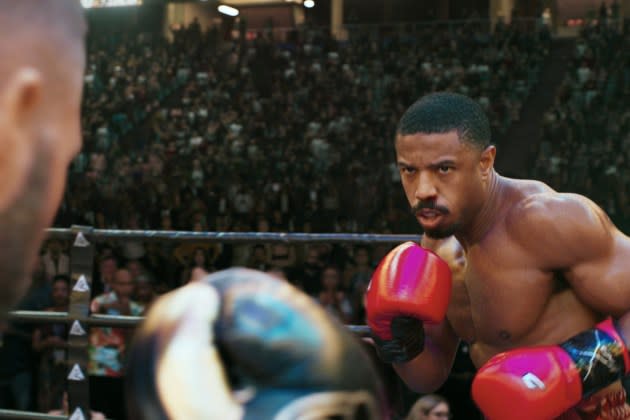
Sporting events captivate viewers everywhere, whether they are showing a competition or an athlete doing the impossible, but enticing an audience through a sports film in the same way can be a difficult task. It’s up to the cinematographers to bring a unique point of view that will highlight the tension and drama, and put viewers on the edge of their seats.
Creed III brings a surreal visual flair to the boxing ring for Michael B. Jordan’s directorial debut. The story of Diana Nyad’s 102-mile swim comes to life through complicated lighting and camera techniques in Nyad. Michael Mann’s Ferrari documents the thrills, and very real dangers, of racing, with scenes shot at high speed with no green screen.
More from Deadline
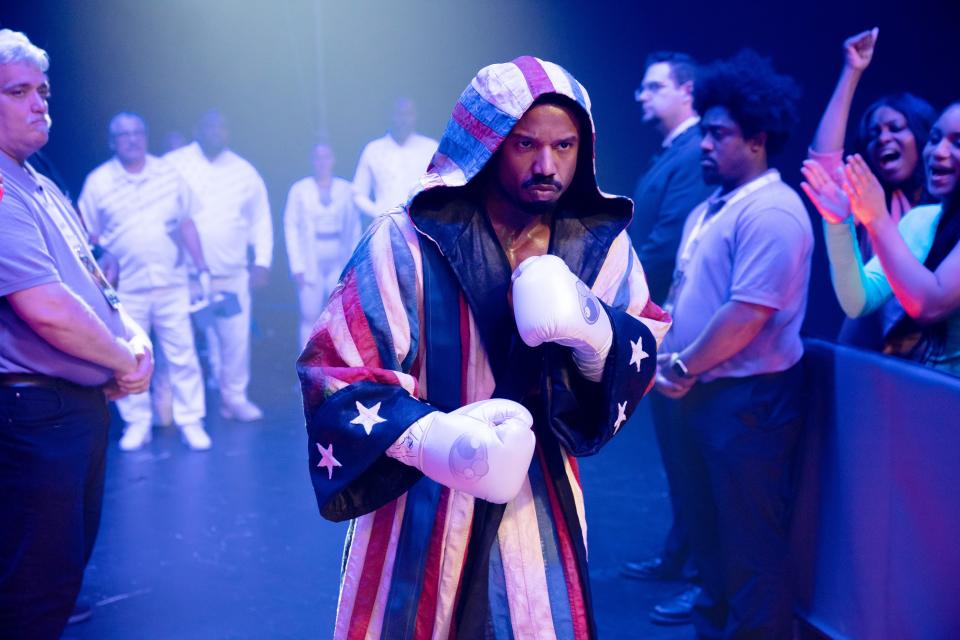
Creed III
When working with first-time directors, bringing their vision to life can be sometimes be a challenge. However, Creed IIIcinematographer Kramer Morgenthau says that director Michael B. Jordan brought a “visual acuity” to the work that only enhanced the film. “I feel like this is something he’s been preparing for his whole life,” says Morgenthau. “He’s always had a really strong interest in the filmmaking process, and specifically in cinematography.” With Jordan’s interest in visuals, in addition to his intimate knowledge of the character of Adonis Creed, Morgenthau knew they could achieve something unique.
When it came to the boxing matches, Morgenthau says filming a narrative in the ring presented a challenge. “It’s a very different style of filmmaking,” he says. “It’s a very choreographed, balletic and operatic kind of language.” While the rest of the film could be shot using traditional methods, the difficulty was in creating interesting and believable fights to keep the audience engaged. Using one sound stage for the three major fights, Morgenthau and his team built lighting into the stage and created the backgrounds using CGI. “You’re not seeing the whole event when you’re there, but it creates a sort of intimacy in the ring.”
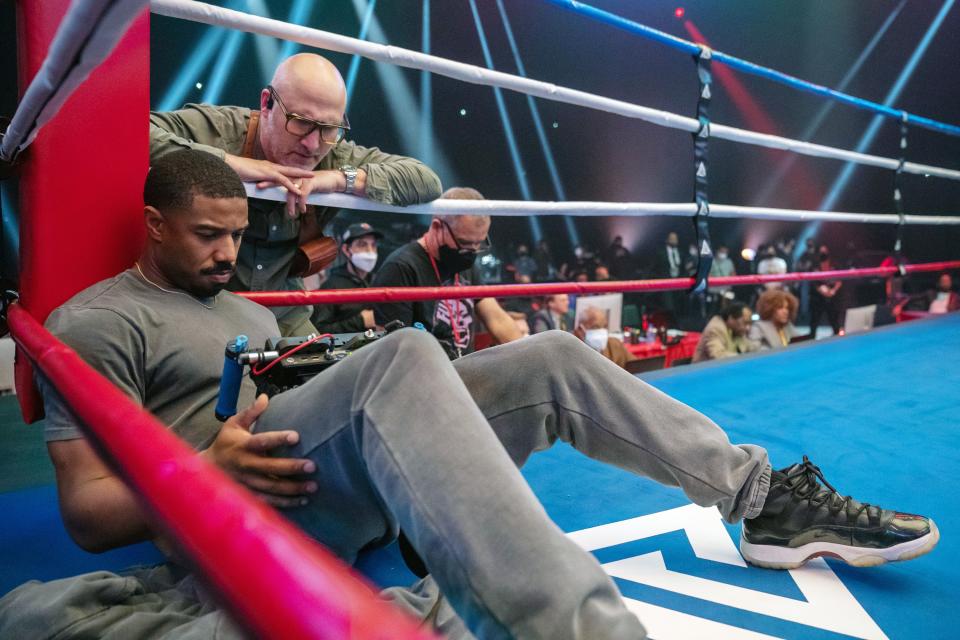
Since the final bout between Adonis and Damian (Jonathan Majors) needed to be set apart from the other fights, Jordan brought his own unique vision for how it should be filmed. “We called it ‘The Void’,” Morgenthau says. “It was an abstract, poetic way of showing this showdown between two childhood-friends-turned-enemies in a gladiator-type situation… He had a completely different way of approaching it. It was one of the more fun things we got to shoot and one of the more exciting pieces of boxing.”
During the final round of the fight, the audience disappears from the background and the camera lenses and lighting change. “We shot it with wider-angle lenses, and the lighting was very abstract and based on what was happening in their minds.” He says Jordan’s vision for the cinematography was to connect back to certain flashbacks in the story to create a “visceral, very surreal take on a boxing match. Very subjective, but also a departure from reality that was a lot of fun to shoot.”
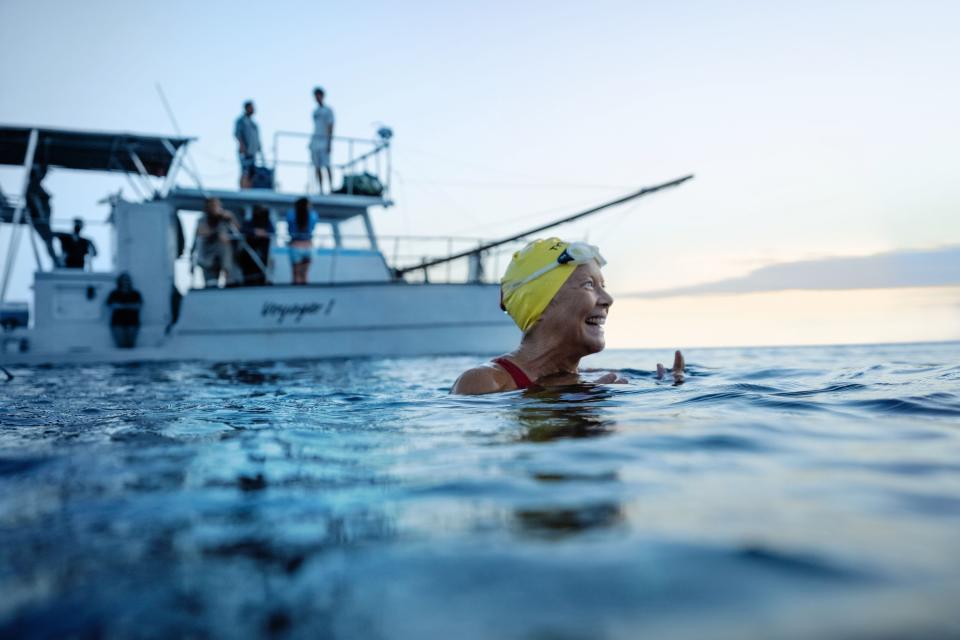
Nyad
Directors Chai Vasarhelyi and Jimmy Chin are well-known in the documentary filmmaking world, but Nyad marks their first foray into scripted film. Cinematographer Claudio Miranda was there to help them along, but he says they were quickly in sync. “I was there to help set up a system to get the most from the actors in the scenes. I had some normal, and nutty, ideas that they listened to, because we needed to keep the swimming interesting.”
The most important thing that everyone agreed on was to always keep cameras focused on Annette Bening, who plays Diana Nyad, during the swim. To ensure that, Miranda and his underwater cameraman Pete Zuccarini, who he worked with on Life of Pi, decided to use smaller cameras that could be more nimble than larger ones. “We both agreed on forgoing the normal larger camera systems,” he says. “I did take some cues from the images, like the red guiding rope I had made which I mainly used to light Annette from the water.”
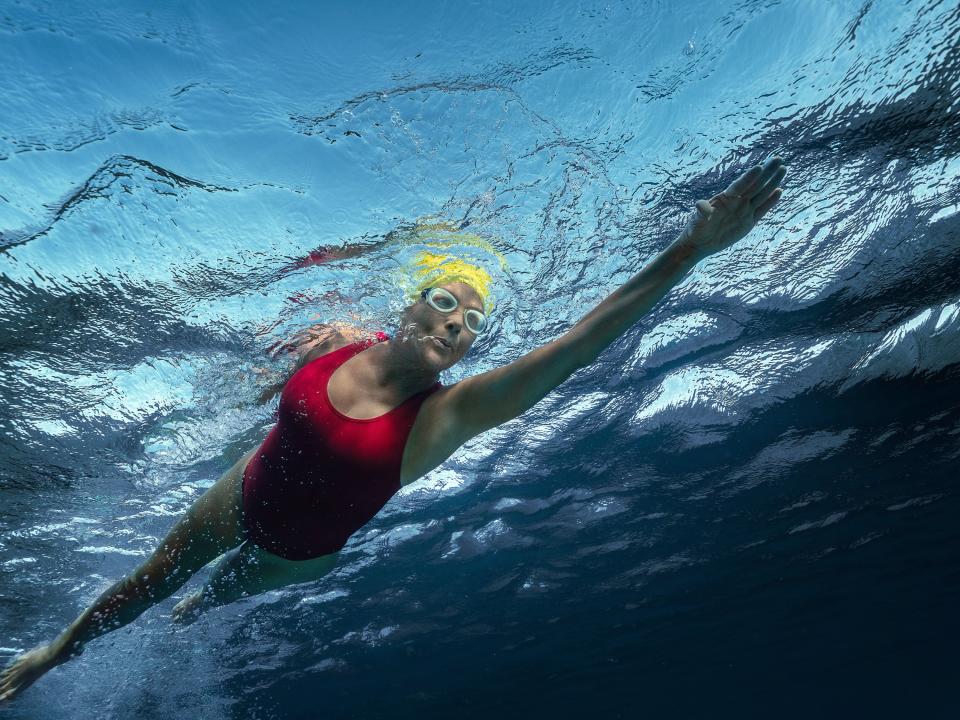
The scenes where Annette is swimming alongside the boat were also supplemented with shots from underwater, which were filmed in a large water tank off the coast of the Dominican Republic. “I had worked with Pete before, so we had a shorthand for the underwater work. For the above work, I had a 250-foot track on which two camera cranes would travel to follow the swim. Annette would swim and the boat would be pulled along through a pulley system.”
Originally, they had planned to use the actual boat from Diana Nyad’s swim in 2013, but a couple of weeks before filming, Miranda learned they wouldn’t be able to use it. Though he says this may have been a blessing in disguise. “I worked with the art director to set camera lines between three points—Annette to Jodie [Foster], Jodie to Rhys [Ifans] and Rhys to Annette. We designed the boat specifically for this, and I incorporated lighting into the boat to light the cast.” The lighting itself was a challenge, as he wanted clear lighting of the actors without taking away the natural feel of the water, especially during the storm scene. “The red string light gave an interesting look, and the storm was very violent so I was not afraid to let it go dark. We really needed to lose Annette visually, to feed the desperation and craziness.”
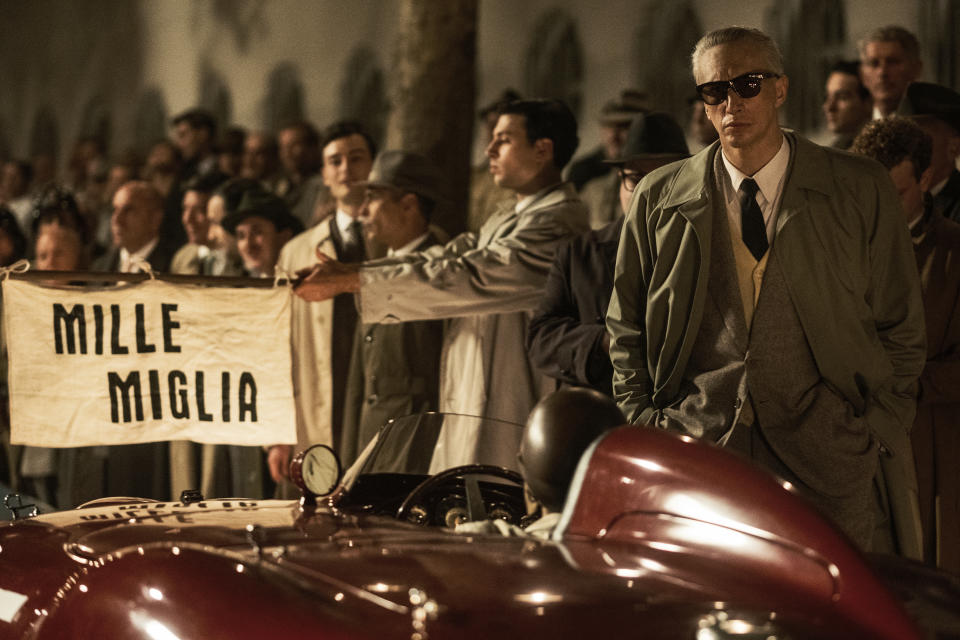
Ferrari
Director Michael Mann has been working on creating a biopic of Enzo Ferrari since the early 2000s, which gave cinematographer Erik Messerschmidt access to an incredible amount of research once the filming began. “It’s really a library of archival footage, newsreel footage, personal accounts… an incredible collection that he’d assembled over decades,” he says. “It’s wonderful when you come into that as a cinematographer because you can piece together what the movie can be quite quickly.”

One thing both Mann and Messerschmidt agreed on very early was that they would not be using green screen. “When the drivers are in the cars, they’re actually going down the road,” he says. Mann’s knowledge of how cars behave while racing, in terms of G-force and weight transference, led him to opt for the cars to drive at the actual speeds to preserve historical accuracy. “He didn’t want to see camera tricks so that we could be going only 40 miles an hour. These cars are tearing down the road at race speeds.”
To capture the cars speeding down the road, Messerschmidt used mounted cameras and had hand-held cameras in the passenger seats. “We’re trying to bring the audience into that world, but we also did a lot of multi-camera,” he says. “Some of the racing sequences are four, five or six cameras shooting simultaneously. A lot of that is because the cars are traveling, in some cases, miles down the road so we could get multiple takes.”
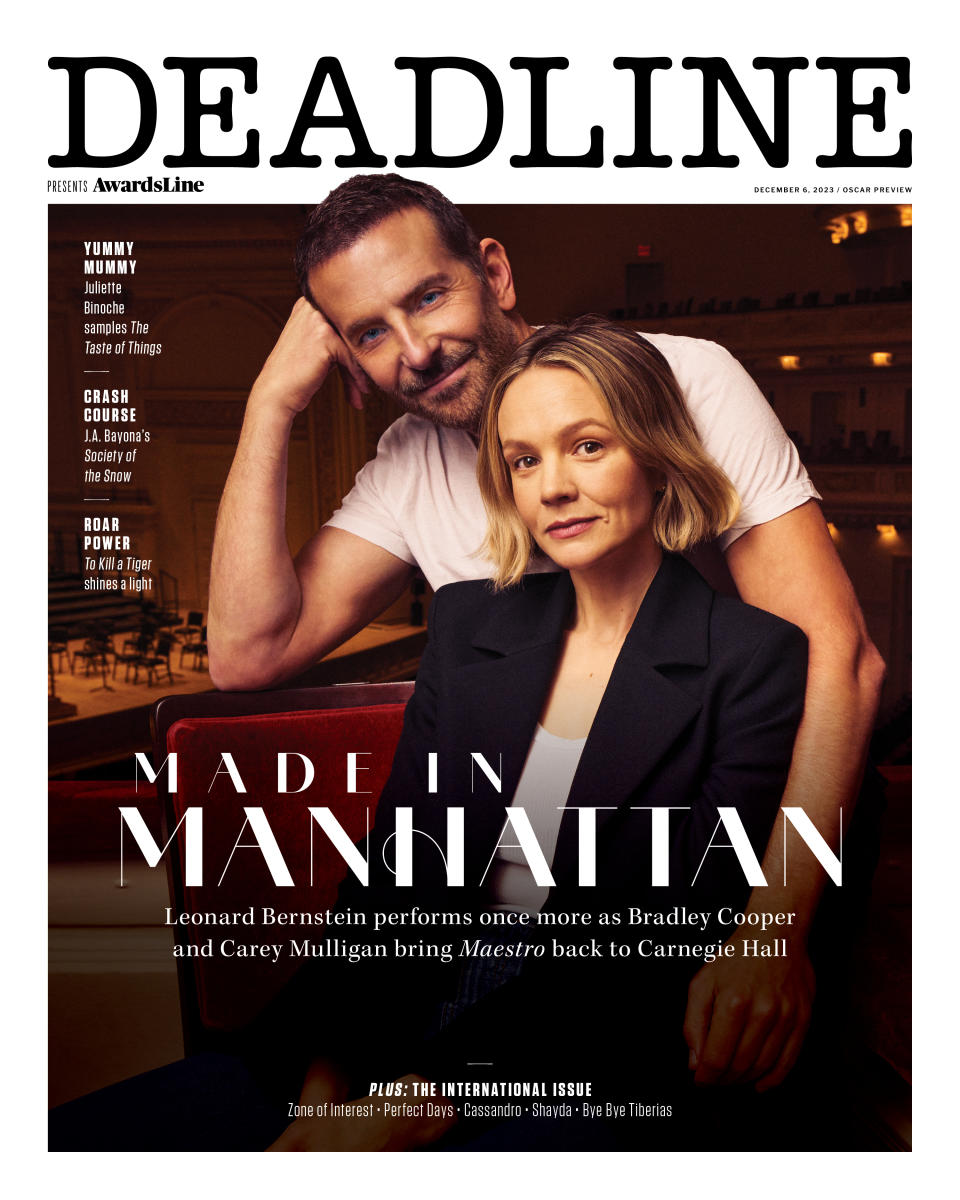
Ferrari takes place during the summer of 1957, before safety features like seat belts and airbags were mandatory for cars, which led to some of the gruesome crashes shown in the film. “We had great reference footage, not of specific crashes, but of how the cars behave in these crashes,” says Messerschmidt. “You almost don’t believe how high the cars go and how fast and violent they are.” The first crash in the film documents a driver being thrown from the car as it becomes airborne and smashes into a concrete building, while the second involved the deaths of spectators as well. “We looked at footage in terms of how the cars behave, but also how the camera work was done.” Since the majority was newsreel footage, the team chose to use a simple wide-lens camera to record. “We wanted it to feel almost objective to watch this unfold in front of you, particularly because it is so horrific. We’re always trying to be historically accurate and responsible in the depiction of how everything unfolds.”
Best of Deadline
2023-24 Awards Season Calendar - Dates For Oscars, Emmys, Grammys, Tonys, Guilds & More
2023 Premiere Dates For New & Returning Series On Broadcast, Cable & Streaming
Sign up for Deadline's Newsletter. For the latest news, follow us on Facebook, Twitter, and Instagram.


